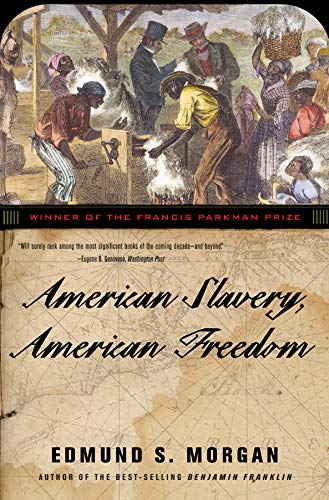

Early Modern Virginia: Reconsidering the Old Dominion. “The Causes of Bacon’s Rebellion: Some Suggestions,” Virginia Magazine of History and Biography 78, no.


The JuntoCast is also available on Spreaker, and recent episodes are also available at SoundCloud and YouTube. Why has Morgan’s book remained so popular for so long?Īs always, you can subscribe to “The JuntoCast” in iTunes or via RSS.What is the relationship between Bacon’s Rebellion in 1676 and the American Revolution in 1776?.How did that response shape the colony’s subsequent development?.How did the planters respond to Bacon’s Rebellion?.What sparked Bacon’s Rebellion in 1676?.Why did it take planters so long to switch from indentured servitude to slavery?.Why does Morgan describe Jamestown as a “boom town?”.Why did it initially fail and what turned the colony’s fortunes around?.To argue this, Morgan turned to the histories of class, politics, and culture to find the origins of race, racism, and liberty in America in the earliest decades of its settlement, in the end arguing that those origins had a profound effect on the American Revolution, the development of the Republic, and, in effect, the history of the United States down to the present day. Even more importantly, Morgan argued that the development of the two were inextricably linked and interdependent since the very beginning. How could a situation like that even come about? Morgan argued that American slavery and American freedom emerged in the same place at the same time in seventeenth-century colonial Virginia. With a running time of 80 minutes, it is a very good approximation (in both content and depth) of a graduate seminar.Īmerican Slavery, American Freedom was published in 1975 and, in it, Morgan contended that the central paradox of American history was that the revolutionaries, who were so dedicated to liberty, maintained a system of labor that required the denial of liberty. Note: This extended episode is meant to give listeners a real sense of how historians discuss and engage with works of history. It continues to be assigned to both graduate students and undergraduates and remains a popular work with non-academic audiences as well. First published in 1975, Morgan’s book has stood the test of time, having won T he Junto‘s first March Madness tournament in 2013. Ken Owen, Michael Hattem, and Roy Rogers revisit a classic work of early American history, Edmund Morgan’s American Slavery, American Freedom. 12: Bailyn, Ideological Origins of the American Revolution 17: Morgan’s American Slavery, American Freedom 18: The Coming of the American Revolution 1: The “Originality Crisis” in American Revolution Scholarship? 25: Political Violence in Early America, Part I 26: Political Violence in Early America, Part II Used Good (1 available) Used book that is in clean, average condition without any missing pages.


 0 kommentar(er)
0 kommentar(er)
